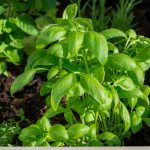Herb gardens are a great way to add beauty, flavour, and fragrance to your outdoor space. They’re also relatively easy to care for, making them a perfect project for even the most novice gardener.
In this blog post, we’ll walk you through the steps to create your own outdoor herb garden. We’ll cover everything from choosing the right location to planting and harvesting your herbs.
Step 1: Choose a location
The first step is to choose a location for your herb garden. You’ll want to find a spot that gets at least six hours of sunlight per day to help your herbs grow and thrive. Herbs also prefer well-drained soil, so avoid areas that are prone to flooding.
If you don’t have a lot of space, you can create a herb garden in one or more pots or planters. Just make sure the pots are large enough for the herbs you want to grow. Raised garden beds or containers can also be a great solution if your soil is heavy or clay-like.
Step 2: Prepare the soil
Once you’ve chosen a location, it’s time to prepare the soil. If you’re planting in the ground, you’ll need to remove any weeds, loosen the soil and add some compost or manure. This will help to improve drainage and add nutrients and goodness to improve the soil.
If you’re planting in a pot, use a potting mix that is specifically designed for herbs.
Step 3: Choose your herbs
There are many different herbs that you can grow in your garden. Some popular choices for the UK include basil, thyme, rosemary, sage, mint, chives, and parsley. You can also grow non-hardy herbs such as parsley, basil and chives indoors – check out our guide How to grow herbs indoors.
When choosing your herbs, think about what you’ll be using them for. If you cook a lot of Italian food, for example, you might want to plant basil, oregano, and thyme.
Basil – Basil is a fragrant herb that’s great for adding flavour to salads, pasta dishes, and more. It prefers full sun and well-drained soil. However, we recommend growing basil indoors, see our
Thyme – Thyme is a hardy herb that’s ideal for borders and edging. It prefers full sun and well-drained soil.
Rosemary – Rosemary is a woody herb that’s perfect for seasoning meats and vegetables. It requires full sun and well-drained soil.
Sage – Sage is a versatile herb that’s great for flavouring meats, soups, stews, and of course stuffing. It prefers full sun and well-drained soil.
Mint – Mint is a fast-growing herb that’s perfect for adding flavour to teas, salads, and more. It prefers partial shade and moist soil. Mint can take over other herbs, so is best planted in its own pot!
Chives – Chives are a member of the onion family and are great for adding a mild onion flavour to salads, soups, and more. They prefer full sun and well-drained soil.
Parsley – Parsley is a versatile herb that can be used to flavour a wide variety of dishes, including soups, stews, and sauces. It prefers partial shade and moist soil.
Step 4: Plant your herbs
Once you’ve chosen your herbs, it’s time to plant them. Here you have two choices, to grow from seed or plant young ready-grown plants or plugs from garden centres.
For ease, and to get your herb garden established quickly, we recommend starting off with ready-to-go plants. You can always expand your herb selection in future by growing from seed.
If you’re planting in the ground, dig a hole that is slightly larger than the rootball of the herb. Place the herb in the hole and fill with soil. If you’re planting in a pot, fill the pot with potting mix and plant the herb according to the instructions on the label.
Step 5: Water your herbs regularly
Herbs need regular watering, especially during the first few weeks after planting. Once they’re established, you can water them less often. Do make sure they don’t become waterlogged, though.
Step 6: Fertilize your herbs
Herbs benefit from a light application of fertilizer once a month during the growing season. You can use a balanced fertilizer or a fertilizer specifically designed for herbs. We recommend choosing organic.
Step 7: Harvest your herbs
This is the fun part! You can harvest your herbs whenever you need them. Just snip off the leaves or stems as needed. Herbs freeze and dry well too, which is helpful for the winter months.
Bonus tips:
- Mulch around your herbs to help retain moisture and suppress weeds.
- Protect your herbs from pests and diseases by inspecting them regularly and taking action as necessary.
- Bring your tender herbs indoors during the winter if you live in a cold climate
Creating an outdoor herb garden is a great way to add beauty, flavour, and fragrance to your home. It’s also a relatively easy project that can be enjoyed by people of all skill levels, and something children will enjoy helping with.
We hope this blog post has inspired you to start your own herb garden. With a little care and attention, your herb garden will thrive and ensure your food is flavourful for many years to come.








